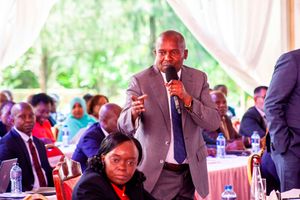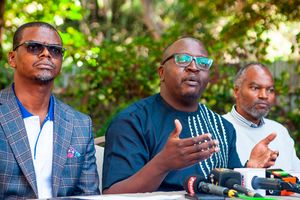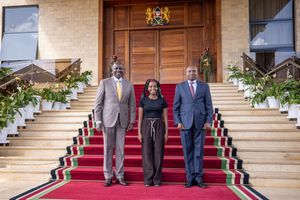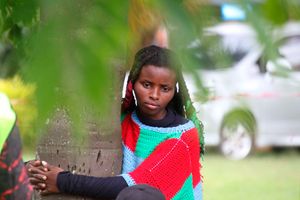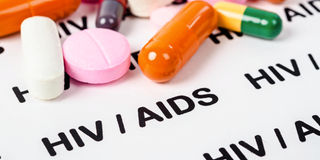
Kenya is among the top four countries in Africa with the highest HIV/Aids burden.
The classification of HIV/Aids and TB in the pandemics category, rather than chronic diseases, has made thousands of patients pay out-of-pocket for services that should be covered under the national health insurance framework, civil society groups now say.
Under the Social Health Authority (SHA) structure, pandemic-classified conditions are not guaranteed full coverage, leaving HIV/Aids and TB patients vulnerable, the groups say.
Previously, under the defunct National Health Insurance Fund (NHIF), many of these services were subsidised or fully covered as the illnesses were classified as chronic.
Civil society groups say excluding HIV/Aids and TB from the chronic diseases list could reverse decades of progress made in managing the illnesses. Kenya is among the top four countries in Africa with the highest HIV/Aids burden, and TB is a leading cause of death among people with HIV.
“SHA has not costed HIV/Aids. The moment we asked, we were told to wait for two years when it would be reviewed. However, what was gazetted has a clear exclusion for HIV under epidemics and pandemics,” said Faith Ndung’u, a delegate at a Civil Society Organisations (CSO) meeting in Nairobi to review the matter.
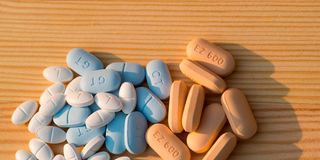
Antiretrovirals. The drugs prevents HIV from replicating.
“GAVI, the Vaccine Alliance, has not met its co-financing obligations. It usually has a target deadline of June. If these targets are not met in terms of funding, we risk being labelled defaulters. It means life-saving vaccines for children may not be available.”
Ms Evaline Kibuchi, the Chief National Coordinator of the Stop TB Partnership, said a study on the catastrophic cost of treating TB in Kenya and its implications on families paints a grim picture.
“It is very costly for Kenyans. Frequent hospital visits require patients to pay out-of-pocket every time they seek care. If TB treatment is not covered by SHA, these costs will impoverish Kenyans. The Global Fund has recognised this challenge, which is why it has been supporting every patient with Sh8,000,” she told the meeting.
“As a country, we need to prioritise lowering the cost of TB treatment so that financial barriers do not prevent patients from accessing healthcare. Multidrug-resistant tuberculosis (MDR-TB) treatment takes 18 months. During this period, the frequent hospital visits requiring out-of-pocket payments force patients to sell land, livestock and other family assets to cover the medical bills, ultimately impoverishing households.”
Ms Kibuchi also questioned the exclusion of people with HIV/Aids from SHA, as the illness is categorised under pandemics.
“About 50 per cent of TB patients and their households face total costs that are catastrophic in terms of expenditure. TB patients experience indirect costs such as income losses that amount to more than 20 per cent of total household incomes,” the report says.
“Only 84 per cent of the 40 million people targeted for TB treatment were reached, and just 52 per cent of the 30 million people targeted for TB preventive treatment accessed it in 2022.”
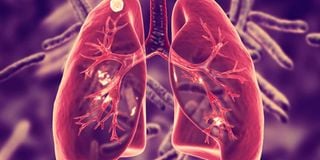
While responding to the concerns by experts, SHA Chief Executive Officer Robert Ingasira told the Daily Nation by phone that the government is working to include HIV/Aids and TB patients in the new scheme.
“The team tasked to review SHIF listings, services and packages has already been set up. It will start working almost immediately. That means we will not be waiting for two years as it had been earlier communicated. That is all I can say,” Mr Ingasira said yesterday.
Dr Andrew Mulwa, the head of the National Aids and STI Control Programme (Nascop), told the meeting that the government would work with them in ironing out the issues raised.
“With the little waivers we have received after US President Donald Trump’s stop order, treatment in Kenya is ongoing,” Dr Mulwa told the civil society organisations during the forum on Tuesday.
President Trump has stopped the work of the United States Agency for International Development (USAID) and frozen most assistance to developing countries.
Many experts in Kenya and other countries agree that Trump’s clampdown on USAID could spell doom for the anti-HIV/Aids campaign, which has been receiving substantial funding from America.
President Trump signed an executive order freezing donor support through USAID on January 20.
The Trump administration also moved to end the work of the organisation.
Through USAID funding, Kenya depended on the President’s Emergency Plan for Aids Relief (Pepfar) programme for HIV/Aids care and treatment for more than two decades.
With 1.3 million Kenyans with the virus, the country has the seventh-largest disease burden on the planet.
Local manufacturing
With the halt in foreign assistance and the government categorising the two illnesses under pandemics, Kenya could witness a rapid increase in HIV infections in the coming few years, officials say.
According to Health Cabinet Secretary Deborah Barasa, this might result in about 60,000 new infections by 2030.
For TB, the ministry projects 23,000 deaths every year, mostly of people with HIV.
Health Principal Secretary Harry Kimtai told lawmakers on February 19 that President Trump’s action has left a giant funding hole.
The PS added that preliminary analyses by the State Department for Medical Services show that the freezing of international development assistance by President Trump would impact Kenya’s healthcare system to the tune of Sh30.9 billion.
“We have done some studies which show that Sh30.9 billion will be required to cover the US government Executive Order freezing funding,” the Principal Secretary said.
He added that the State Department is working to identify alternative funding for strategic health programmes, including TB, HIV/Aids and Malaria.
“The State Department recommends that we invest in local manufacturing of essential and specialised health products,” Mr Kimtai told the National Assembly team.

